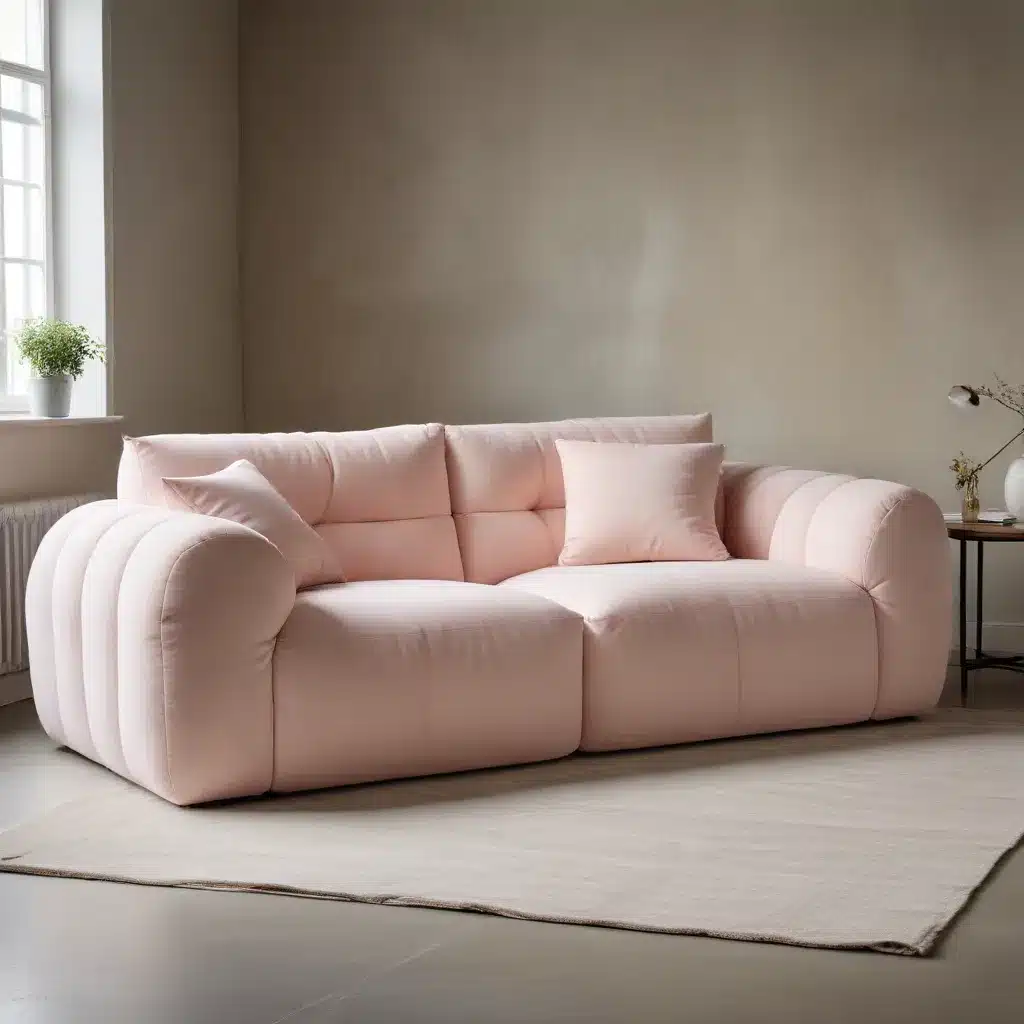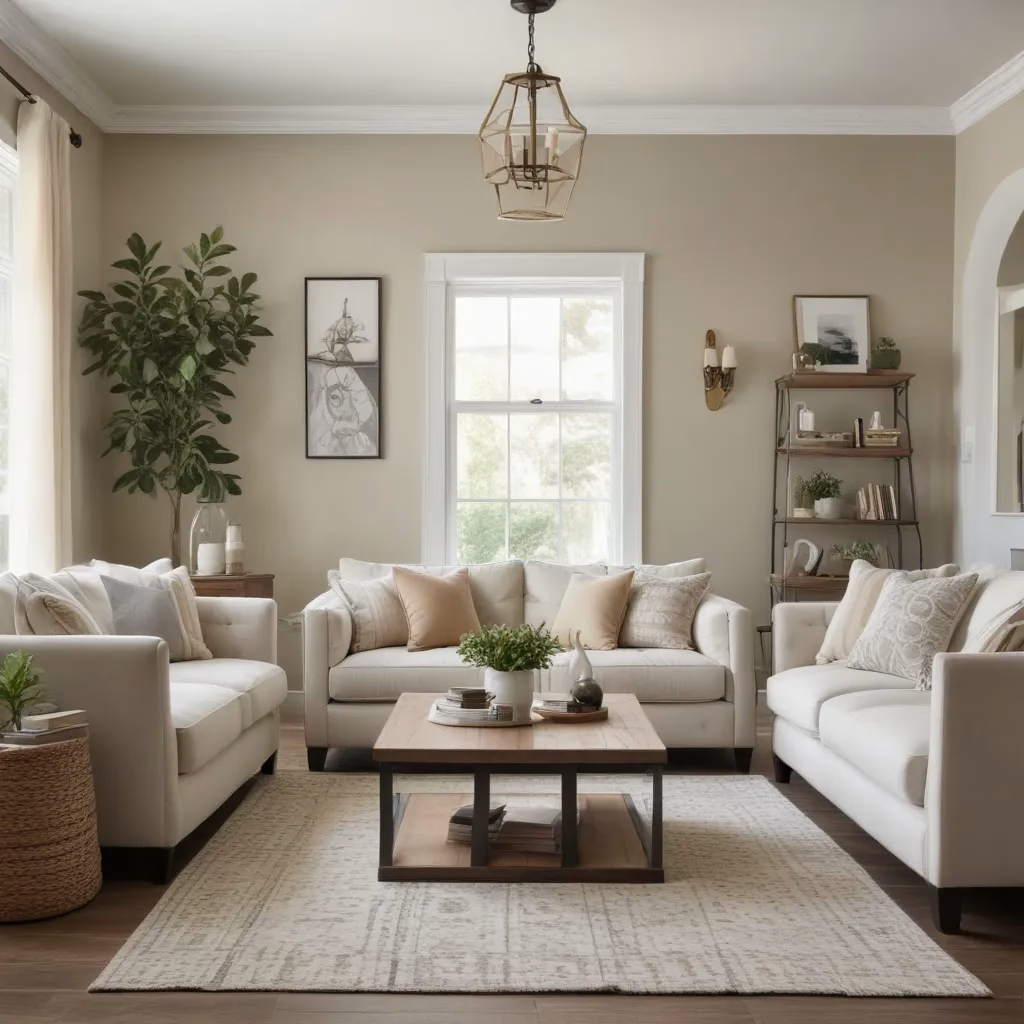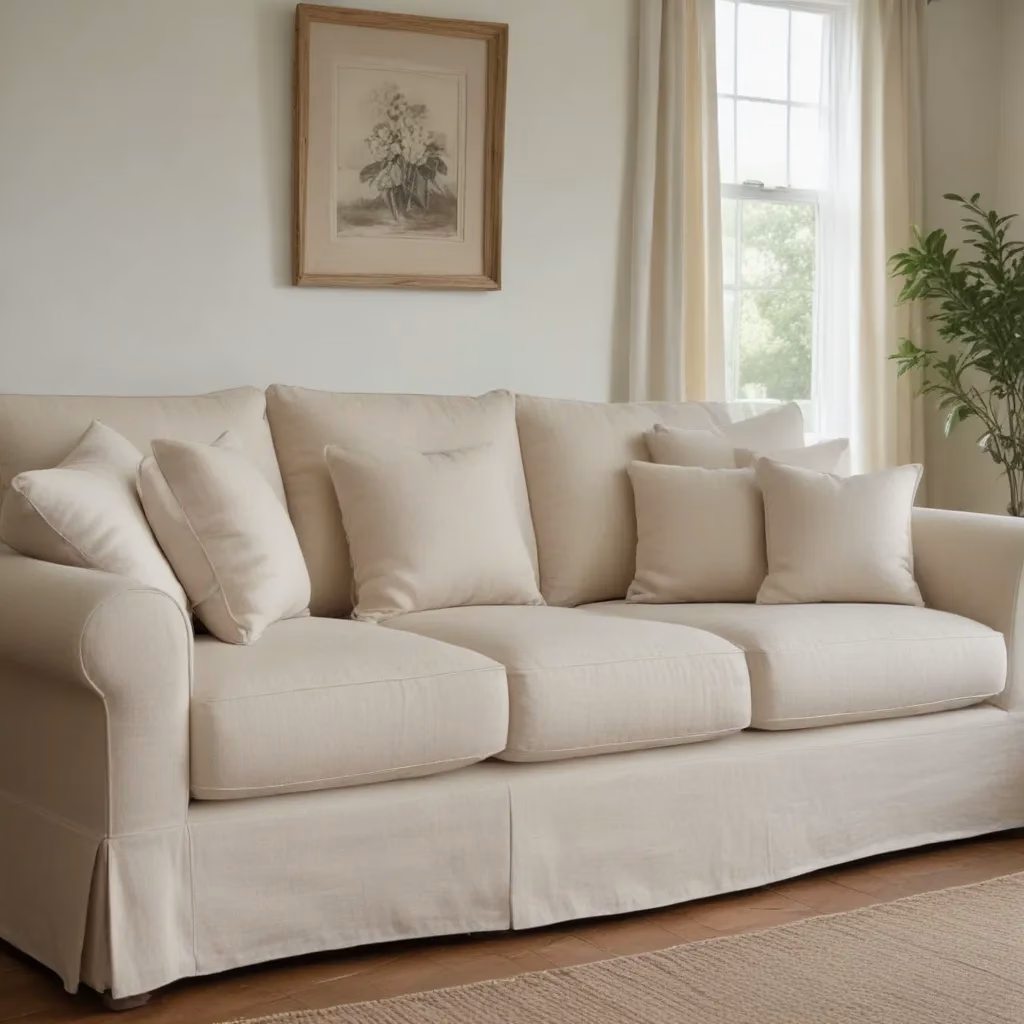
As a furniture specialist with years of experience in the industry, I’ve seen countless sofa designs come and go. But recently, I’ve noticed a fascinating trend that’s reshaping how we think about comfort and style in our living spaces. The world of sofas is experiencing a renaissance, with unexpected softness taking center stage and reimagining what we thought we knew about lounging luxury.
The Evolution of Sofa Comfort
When I first started in this business, sofas were all about rigid structures and firm cushions. The prevailing wisdom was that firmer meant better support and longevity. But oh, how times have changed!
Today’s sofas are embracing a new philosophy of comfort. They’re softer, more pliable, and designed to envelop you in a cloud-like embrace. This shift isn’t just about plushness for the sake of it – it’s a thoughtful response to our changing lifestyles and expectations of home furnishings.
I remember visiting a client’s home recently. They had just replaced their old, sturdy leather sofa with a new, cloudlike creation. The difference was night and day. As I sank into the cushions, I couldn’t help but smile. It felt like the sofa was giving me a hug!
This evolution in comfort is more than just a passing fad. It’s a reflection of our desire for homes that offer sanctuary and relaxation in an increasingly hectic world. We’re no longer content with sofas that just look good – we want them to feel amazing too.
The Science Behind the Softness
You might be wondering, “How can sofas be so much softer now? Won’t they wear out faster?” These are questions I hear all the time, and they’re good ones. The answer lies in some pretty impressive advancements in materials and construction techniques.
High-Resilience Foam
One of the key players in this softness revolution is high-resilience foam. Unlike traditional polyurethane foam, high-resilience foam bounces back to its original shape much more quickly. This means you can sink into your sofa without worrying about permanent indentations.
I once visited a foam factory and was amazed at the difference between traditional and high-resilience foam. When compressed, the high-resilience foam sprang back almost instantly, while the traditional foam took much longer to recover.
Memory Foam Layers
Another innovation that’s making sofas softer is the strategic use of memory foam layers. Originally developed for NASA, memory foam contours to your body, providing personalized support. When used in sofas, it creates a unique combination of softness and support that’s hard to beat.
Advanced Spring Systems
Don’t forget about springs! Modern sofas often use advanced spring systems that work in harmony with foam layers. These aren’t your grandmother’s coil springs. New designs distribute weight more evenly and respond more sensitively to your movements.
Here’s a quick comparison of traditional vs. modern sofa construction:
| Feature | Traditional Sofas | Modern Soft Sofas |
|---|---|---|
| Cushion Core | Firm polyurethane foam | High-resilience foam + memory foam layers |
| Spring System | Basic coil springs | Advanced pocket or serpentine springs |
| Padding | Basic polyester fiber | Blend of natural and synthetic fibers |
| Fabric | Often stiff for durability | Soft, breathable performance fabrics |
Designing for Softness
Creating a sofa that’s both soft and stylish is no small feat. Designers are rising to the challenge with innovative approaches that merge aesthetics with comfort.
Oversized Proportions
One trend I’m seeing a lot is the use of oversized proportions. Bigger, deeper seats allow for more padding without compromising the sofa’s silhouette. It’s not uncommon to see sofas that look like they could swallow you whole – in the best way possible!
I recently worked with a family who wanted a sofa big enough for everyone to pile on for movie nights. We chose a massive sectional with extra-deep seats. The result? A cozy haven that became the heart of their home.
Rounded Forms
Sharp angles are out, and curves are in. Rounded forms contribute to the overall sense of softness, both visually and physically. These organic shapes invite touch and create a more relaxed atmosphere in a room.
Layered Textures
Texture plays a huge role in perceived softness. Designers are layering different textures to create depth and interest. Think plush velvets combined with nubby wools or smooth leathers paired with soft throws.
I often advise my clients to choose sofas with removable covers in different textures. This allows them to switch up the feel of their sofa seasonally or as their tastes change.
The Impact on Interior Design
The trend towards softer sofas is having a ripple effect on interior design as a whole. Rooms are becoming more relaxed and inviting, with the sofa often serving as the centerpiece.
Creating Cozy Nooks
With sofas becoming more comfortable, there’s a growing trend towards creating cozy nooks within larger spaces. A soft, inviting sofa can transform an unused corner into a reading retreat or a conversation area.
I once helped a client turn an awkward space under a staircase into a snug hideaway with a custom-made soft sofa. It quickly became everyone’s favorite spot in the house.
Balancing Softness with Structure
While softness is key, it’s important to balance it with some structure in the room. I often suggest pairing a super-soft sofa with more angular pieces like a sleek coffee table or geometric rug. This contrast creates visual interest and prevents the room from feeling too “squishy”.
Color Palettes
The move towards softer sofas has also influenced color choices. Soft, muted tones are popular, reflecting the comfort-focused aesthetic. Think warm greys, soft blues, and creamy neutrals.
However, don’t be afraid of bold colors! A vibrant sofa can be a fantastic focal point, especially when it’s invitingly soft. I recently worked on a project where we paired a deep emerald green velvet sofa with neutral walls and accessories. The result was stunning – a room that felt both cozy and sophisticated.
Maintenance and Care for Soft Sofas
With all this talk of softness, you might be concerned about durability. It’s a valid concern – after all, a sofa is a significant investment. The good news is that modern soft sofas can be just as durable as their firmer counterparts, if not more so. However, they do require some specific care.
Regular Fluffing
Soft sofas, especially those with down or down-alternative fillings, benefit from regular fluffing. This helps maintain their shape and prevents the filling from settling unevenly. I always tell my clients to make fluffing their cushions part of their weekly cleaning routine.
Rotation
To ensure even wear, rotate your cushions regularly. This is especially important for sofas with removable cushions. If your sofa has attached cushions, consider swapping seating positions periodically.
Vacuuming
Regular vacuuming is crucial for maintaining the appearance and hygiene of your soft sofa. Use a soft brush attachment to avoid damaging the fabric. Don’t forget to vacuum under the cushions too!
Dealing with Spills
Accidents happen, especially on a sofa that’s so comfortable you never want to leave it! The key is to act quickly. Blot (don’t rub!) spills immediately with a clean, white cloth. For tougher stains, consult the manufacturer’s cleaning guidelines or call in a professional.
Professional Cleaning
Speaking of professionals, I recommend having your soft sofa professionally cleaned every 12-18 months, depending on use. This deep clean can help extend the life of your sofa and keep it looking (and smelling) fresh.
The Future of Sofa Design
As I look ahead, I’m excited about where sofa design is heading. The trend towards softness shows no signs of slowing down, but it’s evolving in interesting ways.
Smart Fabrics
One area I’m keeping a close eye on is the development of smart fabrics. These high-tech textiles can do everything from regulating temperature to repelling stains. Imagine a sofa that stays cool in summer and warm in winter!
Modular Designs
Another trend I’m seeing is a move towards more modular designs. These flexible sofas can be reconfigured to suit different needs, perfect for our increasingly adaptable living spaces.
Sustainability
Sustainability is becoming increasingly important in furniture design, and sofas are no exception. I’m seeing more and more sofas made with recycled materials, organic fabrics, and eco-friendly manufacturing processes.
Choosing Your Perfect Soft Sofa
With so many options available, choosing the right soft sofa can feel overwhelming. Here are some tips I always share with my clients:
-
Consider your lifestyle: A white velvet sofa might not be the best choice if you have kids or pets!
-
Think about maintenance: Are you willing to fluff cushions regularly? If not, look for a sofa with a more resilient filling.
-
Test it out: Always sit (or better yet, lie down) on a sofa before you buy it. What feels soft to one person might be too squishy for another.
-
Look at the frame: A soft sofa still needs a sturdy frame. Look for hardwood frames with reinforced corners.
-
Check the warranty: A good warranty can provide peace of mind, especially for a significant purchase like a sofa.
-
Consider your space: Measure your room carefully and consider how the sofa will fit with your other furniture.
-
Don’t forget function: A sofa can be super soft and still have practical features like built-in storage or a pull-out bed.
If you’re looking for expert advice on choosing the perfect soft sofa for your home, the team at Sofa Spectacular is always happy to help. Their range of sofas combines the latest in comfort technology with stylish designs to suit any home.
Embracing the Soft Revolution
As I reflect on this shift towards softer, more comfortable sofas, I can’t help but feel excited. It’s not just about furniture – it’s about creating homes that truly nurture and support us.
I’ve seen firsthand how the right sofa can transform a room and even a family’s daily life. From movie nights to lazy Sunday afternoons, from heart-to-heart conversations to power naps, a great sofa is at the center of so many of life’s moments.
This trend towards unexpected softness in sofa design is more than just a passing fad. It’s a response to our very human need for comfort and connection in an often hard-edged world. As we continue to spend more time at home, our sofas have become more than just pieces of furniture – they’re sanctuaries, workspaces, and gathering spots all rolled into one.
So the next time you sink into a gloriously soft sofa, take a moment to appreciate the thought and technology that went into creating that comfort. And remember, in a world that can sometimes feel a bit too hard, there’s nothing wrong with embracing a little unexpected softness.



